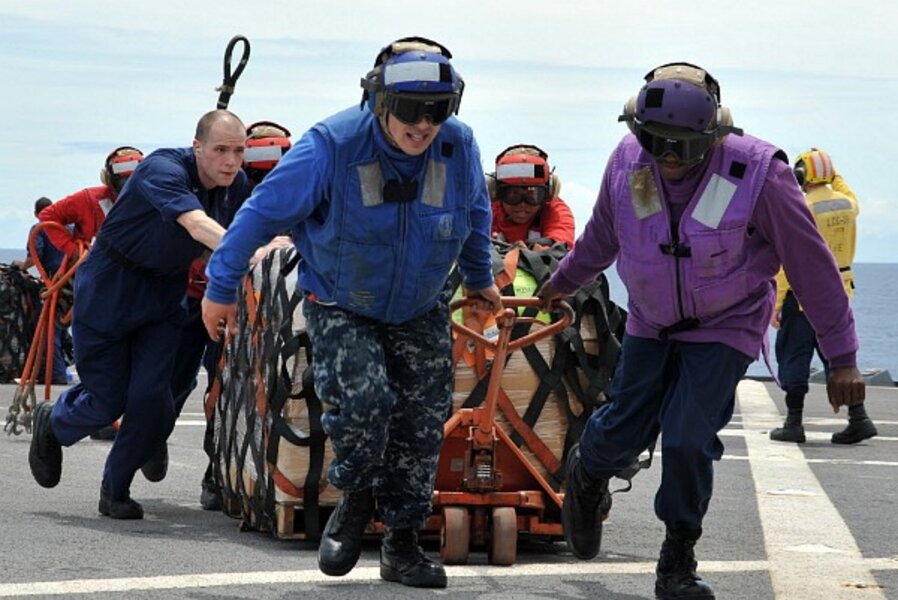Japan tsunami: Here's how you can help
Loading...
The world stands transfixed before images of Japan experiencing what Prime Minister Naoto Kan says is the "most severe crisis since the war ended 65 years ago."
But nations also are responding quickly to the devastation, sending aid workers, rescue equipment, and humanitarian supplies to the beleaguered Japanese people. From the United States, that includes US Navy and Marine Corps units as part of what’s been dubbed “Operation Tomodachi” – Japanese for “friendship.”
"We have units from all of our services, with a multitude of capabilities, from medical to communications to civil engineering, poised and ready to support where needed," John Roos, US ambassador to Japan, said Saturday.
The aircraft carrier USS Ronald Reagan and its support ships arrived in the area over the weekend. Helicopters from the aircraft carrier are delivering food and water to stricken communities, and the ship can act as a platform for refueling Japanese helicopters involved in rescue and recovery efforts ashore.
Initial help from the U.S. Agency for International Development (USAID) includes two search-and-rescue teams – one from Fairfax County, Virginia, and one from Los Angeles County – each with 72 workers, 75 tons of rescue equipment, and dogs trained to detect live victims.
Non-governmental organizations (NGOs) have responded quickly as well.
Doctors Without Borders has sent three-person teams to some of the hardest hit areas in Japan. The Los Angeles-based International Medical Corps has deployed an emergency response team as well. Mercy Corps, based in Portland, Oregon, and working with its Japanese partner Peace Winds, will be setting up “balloon shelters,” which can accommodate up to 600 people, and it’s also sending large emergency tents, water, food, and blankets.
Meanwhile, there are many ways for individuals and families to help, although officials caution against the possibility of charity scammers of the type that proliferated after Hurricane Katrina.
“If you decide to donate money to the Japanese tsunami relief effort, you would want your money to go where it can do the most good to help victims and their families,” said Washington State Secretary of State Sam Reed. “So we encourage you to check before you give by doing your homework on the charities asking for your money. We don’t want scammers to benefit from this tragedy.”
On his website blog, Mr. Reed says to make sure you ask these questions before sending a check or giving out your credit card number over the phone or online:
• Is the charity or fundraiser registered with the state?
• What is the name, address, and telephone number of the organization asking for the donation?
• Exactly how will the donation be used?
• What percentage of the contribution will actually be spent on the charitable purpose of the organization?
Many familiar and longstanding charities are taking donations via websites and text messages. Some examples:
Text "redcross" to 90999 to make a $10 donation to the American Red Cross. Text "japan" or "quake" to 80888 to donate $10 to the Salvation Army. Text “4japan” to 20222 to send a $10 donation to the humanitarian group World Vision. The charges will appear on your cell phone bill.
Most major groups post updates about their activities on website blogs as well as on Twitter and Facebook. Texting “corps” to 30644 will bring Mercy Corps updates in response.
For a list of charitable organizations, check out InterAction, the largest alliance of U.S.-based international NGOs. The Better Business Bureau and Charity Navigator are good ways to check out charities as well.





